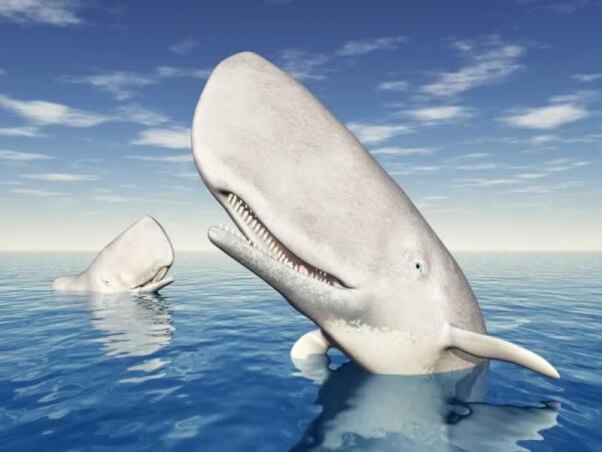A Crab, a Sperm Whale, and a Manta Ray Float Into a Bar …
When you see underwater footage of the ocean, there’s something so pure, calm, and majestic about it, as well as about the beings who live there. They live below the surface of the waves, which we can never do, and how they stay alive and communicate with each other is riveting. So come take an undersea dive to learn more about our aquatic amigos.
I’m Looking at the Manta Ray in the Mirror

Besides having the largest brains of any fish, manta rays are now being credited with having self-awareness, after giant manta rays passed a mirror test. When a mirror was placed in their tank, the manta rays’ behavior suggested that they recognized the reflections as themselves, not as those of other manta rays. The fish didn’t try to engage with the reflection, as one would expect they would if they thought the image was of someone else. Instead, they flapped their fins, blew bubbles, and circled in front of the mirror to determine whether their reflection moved when they moved. Only a small number of animals, mostly primates, have passed the mirror test.
Yeti Crabs Can Find Warm Water in Antarctica
The Kiwa tyleri, a hairy-chested white yeti crab, lives in the frigid waters off the coast of Antarctica. To survive the extreme climate, these unique deep-sea crustaceans dwell near hydrothermal vents. But because only a tiny area of the water is a livable temperature, the crabs must cluster together to stay alive. Check out the video below to find out how these captivating crustaceans actually “farm” their own food and other surprising facts:
Where Does That Sperm Whale Live? Check the Accent

Whales are extremely intelligent—perhaps even smarter than humans—and their communication is sophisticated. Sperm whales use patterns of clicks that we call “codas” to talk to each other, but a study published in the journal Animal Behavior found that coda patterns among whales varied significantly depending on which region the whales lived in. This means that sperm whales have accents—and because juveniles and calves, like young crows and humans, produced a wider variety of coda types, a standardized coda, or regional accent, is likely something that they learn over time.
The oceans cover 71 percent of the Earth’s surface and contain 97 percent of the Earth’s water. Let’s take care of our planet and respect all aquatic life by leaving marine animals off our plates and out of captivity.

